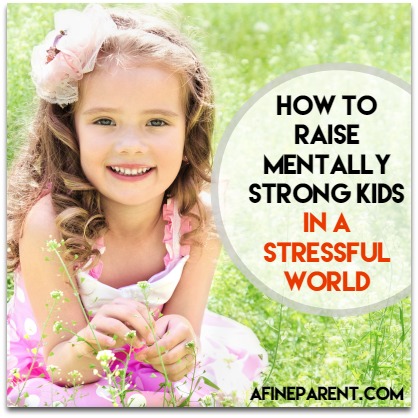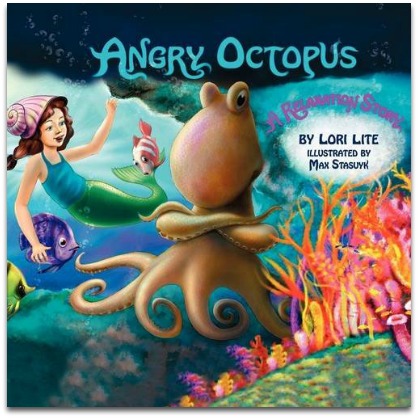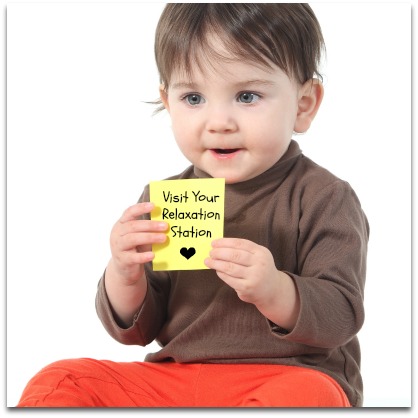 Don’t you sometimes wish you were a carefree child?
Don’t you sometimes wish you were a carefree child?
To just leave behind work, family, financial responsibilities, all the doom and gloom we hear in the news, and just be completely worry-free?
As it turns out though, childhood isn’t as worry-free as we’d like to think it is.
A study of 20,000 Australian children indicated that on average 1 in 5 children worried most or all of the time. The most worried about topics were future, family, and health. Other categories of worry included friends, body image, bullying, world problems, school and being different.
While these stats are sobering, here’s the part that really got to me – of those surveyed, 1 in 5 children said that they wouldn’t talk about it to anyone.
In the study mentioned above, developmental psychologist Dr. Richard O’Kearney says embarrassment and fear of what others would think about them keeps kids from reaching out for help. So, not only are kids experiencing stress, but they’re not reaching out for support.
As a Mental Skills Coach for the last decade, I’ve worked with youth athletes to help them become more mentally strong. I’ve helped kids learn to manage stress both sport-related and life-related — school concerns, social issues with friends, feeling pressure from parents on and off the field, and more.
Now that I have my own kids, I see even more how easy it is for them to experience stress.
While some stress is normal, our kids shouldn’t have to deal with these burdens without a support system (that’s us!). Additionally, they need to have their own arsenal of skills to help them better manage the stress they are experiencing when we’re not around or they are hesitant to bring the situation to our attention.
I want to share with you today some of the strategies that I teach. Please keep in mind that while the ideas below can bring stress relief to many, if you suspect your child has higher levels of anxiety than what seems normal, you may want to check in with your healthcare provider.
First Things First: Understand the Sources, Signs and Symptoms of Stress
One of the findings of the study mentioned above is that children worry more as they grow older. As young ones become tweens, then teens, then adults, life just gets more and more stressful.
Before we start looking for strategies for dealing with the stress though, we want to help our kids identify the sources of stress, and their own signs and symptoms.
So, start by helping your children identify:
 1. What situations cause them stress?
1. What situations cause them stress?
These may be social situations, family situations, something they saw in the news, or trying something new.
Try not to judge what causes your child stress; be open to hearing about it and validate their feelings.
When you and your child are aware of what triggers stress responses, you can work to adjust the circumstances (though you don’t necessarily want to avoid the situation). Ultimately you can help to prepare them ahead of time with stress management skills.
2. What are their unique signs and symptoms of stress?
While all kids differ in how they experience stress, there are some commonalities I’ve seen in my work: heart beating fast, feeling like they can’t breathe well, pain or butterflies in the stomach, and worried thoughts.
Talk to your child about what happens when they’re stressed. When you can help them understand how their body and mind reacts and responds to stress, they can identify these signs and start to calm down using the skills we’ll cover next.
Without awareness, change can’t occur; make sure you help your kids identify what triggers stress as well as how they think and feel when it occurs.
4 Practical Strategies for Helping Your Kids Deal with Stress
There are a variety of techniques and strategies that can be used to help us deal with stress and become mentally strong.
Ideally, you can match the technique to the type of symptom that your child is experiencing. If their symptoms are more physical in nature such as jitters or a racing heart rate, they might find the first two techniques to be more effective.
However, if stress creates cognitive symptoms such as negative thoughts or a lack of focus, then the last two techniques will likely be more beneficial.
If your child experiences both, then start with whichever technique your child seems most interested.
Each of these techniques have an “official” name and a “kid-friendly” name. Depending on the age of your child, consider what you call the strategy. By introducing these ideas in a fun and creative way, kids are more likely to understand and be interested in the ideas.
Strategy #1: Deep breathing, or “Balloon breaths”
Think about how you feel when you’re stressed. Chances are your breathing is shallow, your heart rate is quick, and you may feel sick to your stomach. Your kids may feel the same way when they’re stressed.
Our heart rate and breathing are connected. If we can teach our kids to slow down their breathing and bring more oxygen into their bodies, they’ll notice their heart rate slow down and will likely start to feel better.
How to teach deep breathing:
- Instruct your child to breathe in deeply through their nose. To take a deep breath, they’ll want to fill their lungs slowly. You can help them understand this idea by telling them they’re filling up a balloon in their belly with air.
- Once they have taken a deep inhale (their balloon is full), pause for a brief moment.
- Exhaling through their mouth, slowly let the air out of their balloon. Their stomachs should contract back in.
- Repeat, and remember: Shoulders should stay relaxed, and with a correct deep breath, you’ll see the stomach expand and contract with very little movement elsewhere.
 Check out the book Sea Otter Cove: A Relaxation Story by Lori Lite. The book teaches kids to use diaphragmatic breathing (another name for deep breathing) through an engaging story.
Check out the book Sea Otter Cove: A Relaxation Story by Lori Lite. The book teaches kids to use diaphragmatic breathing (another name for deep breathing) through an engaging story.
Keep in mind:
- Calming down won’t come in just one breath right away. Depending on the situation and the level of stress that is being experienced, it may take 20-30 breaths to start to calm down.
- In time and with practice, many will feel relief with one or two deep breaths.
- Remind kids to use their deep breathing before going into a stressful situation they can predict (such as a test) and also when they start to notice their own signs and symptoms.
- This is a great skill to teach younger kids as young as 2 or 3 years old. I started using this with my son around the time he was 3 and by about 3 ½ he’d tell me he need to take a breath to calm down and would ask me to do it with him.
Strategy #2: Progressive Muscle Relaxation or “Squeezers”
Muscle tension is another typical symptom of stress. When our muscles are tight, not only do we not feel good, but we can’t perform well whether that’s in school, in sport or in life.
Try this: place your hand palm down on the table. Tighten the muscles in your hand and wrist. Now try to wiggle your pointer and middle fingers up and down (when one is up, the other is down). It doesn’t work very well, does it? And it’s pretty uncomfortable.
Instead, relax your hand and put it palm down on the table. Continuing the feeling of relaxation, wiggle your pointer and middle fingers again. Chances are this was much more comfortable and happened easily. With muscle tension, movement, performance and comfort are impaired. So how do we release tension?
How to teach progressive relaxation:
Complete progressive relaxation can take 10-15 minutes as it entails tightening a muscle group for 5-7 seconds, then relaxing for the same amount of time and repeating for a total of three times before moving to the next muscle group. For kids and even teens, this can be a lot to remember and a bit time consuming.
Try this 4-point abbreviated version instead with your kids and focus on any areas where they specifically feel tension.
For each of the body parts listed below (The 3Fs and an S), have your child squeeze (tighten) for a count of 5 and then relax (release) for a count of 5. Do each body part twice before moving on to the next body part:
- Feet
- Fists
- Shoulders
- Face
After each time squeezing, that body part should feel more relaxed. By the time all 4 body parts are done, your child should feel less muscle tension in their body.
In time, they may only need to squeeze the area where they feel tension, or the area that helps them feel the most relaxed.
For example, if your child holds tension in their jaw when they are stressed, a face squeezer would be most helpful.  If your child tends to get frustrated or even angry when stressed, then a fist squeezer might be most useful.
If your child tends to get frustrated or even angry when stressed, then a fist squeezer might be most useful.
Lori Lite has another fantastic book that teaches about breathing and progressive relaxation. Angry Octopus is a great book to have in your resource library to further teach this idea to your kids.
Keep in mind:
Progressive relaxation is a great skill to practice before bed, and you can guide your child through it as they get ready for sleep. If your child carries stress in other areas of the body, you can adjust as needed.
Strategy #3: Reframing your thoughts or “Flip the coin”
Each year the American Psychological Association conducts the Stress in America survey, with a slightly different focal point each year.
The 2013 survey looked at teens, specifically, if they are adopting adult’s stress habits. One important finding? Of the 1,018 teens surveyed, during the school year, they experienced more stress than adults did in the past month. So not only are kids and teens susceptible to stress, but they are experiencing it at shockingly high levels. The full report can be found here.
When we are stressed, we usually have negative thoughts or worries. Children and especially teens are no different. Reframing, or “flip the coin” is a cognitive strategy that helps to look at the situation from a different perspective.
We can help kids learn to shift perspective or “flip the coin” from heads to tails — it’s still the same coin, we’re just looking at it in a different way.
How to teach reframing:
- Start by having your child share what they think about when they are stressed. If they’re old enough, they can write these down, or you can write for them. Write these “negative” thoughts on one side of a piece of paper.
- Explain that these thoughts are normal and that we all have them. However, we don’t have to just accept these thoughts and keep on feeling stressed.
- Use an actual coin to show your kids heads and tails. They’re two very different sides of the same coin. We can do this with our thoughts: We want to look at the situation from a different perspective, or “from the other side of the coin.”
- Have your child come up with reframed or “flipped” thoughts for each of the statements they normally think when worried. This way they are ready to “flip the coin” when those thoughts occur. Let them know it’s okay if the worry or negative thought happens first, the goal is to reframe it, or “flip the coin” as soon as they can. Provide examples, such as: If you’re thinking you’re nervous for the test, the other side of the coin or replacement thought is to focus on the fact that you have studied a lot. If you’re thinking about how you might let mom and dad down if you don’t play well, the other side of the coin is to focus on the fact that mom and dad always say how happy they are to watch you play, so no matter what happens they’re proud.
Keep in mind:
Your kids will likely say some of these negative thoughts out loud and you can remind them to reframe, and even help them if they get stuck. Use these moments as teaching opportunities.
Also, in these situations, it is easy as parents to feel protective and end up wanting to hover like a helicopter parent. Instead, keep your eye on the ball and focus on helping kids practice reframing.
Strategy #4: Imagery or “Visit Your Relaxation Station”
 Imagery is creating or recreating an experience in your mind, using all of your senses. For kids whose thoughts tend to become overwhelming when they’re stressed, this is another strategy that helps to focus the mind and then can calm the body as well.
Imagery is creating or recreating an experience in your mind, using all of your senses. For kids whose thoughts tend to become overwhelming when they’re stressed, this is another strategy that helps to focus the mind and then can calm the body as well.
This strategy can be especially helpful for younger kids who already use their imagination but can be a bit tougher to teach as we don’t know what they’re actually imagining or how well. With practice however, this can be a very useful skill.
How to teach imagery to relax:
- Pick a place where you feel relaxed in life, for example your bedroom, a place you’ve visited, or somewhere you want to go that you think would be relaxing (this 3rd option is better for teens or adults).
- Imagery is about creating this place in your mind, using all of your senses. What would you see in this place? What are the smells? Is there anything you would hear? What about what you feel? Anything that you would taste?
- Use all of the details about the location, have your kids create this place in their mind whenever they are starting to feel stressed or will be going into a stressful situation. This is their “Relaxation Station”, and they can visit it any time that they need to. They can also add in some deep breathing before they do imagery and during.
Keep in mind:
Imagery is a more complex skill so it may take more time to get comfortable with. As with all of the skills, practice is important, especially before the stressful moment occurs.
Each one of these skills can be effective on their own or they can be layered together as needed. Use the ideas above and the action plans below to help your kids become more skilled at stress management.
Understanding how and when to control stress is a life skill that all kids need and will benefit from. As a parent, you can help them identify the times they need to relax and teach skills that will help them in all areas of life.
As they are learning these skills, remind them about using them and in time you will likely see them use these ideas without prompting. About 85% of the time my 4-year-old is upset, he remembers to take deep breaths on his own without me having to remind him. We’ve been working on this skill for a while, and he’s become much better at being able to calm down when he’s feeling upset or stressed.
The 2-Minute Action Plan for Fine Parents
Talk with your kids to help them identify what causes them stress (for example: tests, social situations at school, competition, etc.) as well as what their own signs and symptoms are when they are stressed. Both are important to know so that they can prepare for and become aware of the moments they will need to use their stress management skills.
The Ongoing Action Plan for Fine Parents
Pick one of the above ideas that your child finds most interesting (or that you think is most appropriate given what you learned from the 2-minute action plan).
Focus on that strategy this week. Find times to practice this skill when there is no stress, such as before bed or in the morning while getting ready for the day. Next, find times where there may be low levels of stress to use the skill. Finally, progress to using the skill under more stressful circumstances.
Focus on one skill at a time rather than all at once to maximize effectiveness.
It’s important that you and your kids remember that mental skills take time to develop, and the skills may not seem like they’re working right away. These are positive habits you’re working on helping your kids create, so keep at it!
Think about using the skills yourself in order to model to your kids when and how they’re used, as well as to experience the benefits yourself. When I taught my son balloon breaths, and even now when I remind him to do them, I do deep breaths along with him.


An excellent article which helps parents to guide their children to lead a stress free life……………..
Thank you so much, Delma!
I love following these blogs and the information is very useful and practical. Im trying my best to be a better parent but have some questions? When your child (i have three) has a tantrum when they’re at the gate or door way to a class or club and REALLY dont want to go (its a one off i suppose) crying and screaming in the street, what do you say and how do you deal with this? I also struggle with my two ealdest who are always bickering and calling names….how to deal with with this? What to say so make them aware of how nasty and a bad example they are to their younger sibling??? What to do?
Many thanks
Hi Annie,
While I’m certainly not a behavioral specialist, it seems to always be helpful to validate a little one’s (or older child’s feelings). It’s tempting to encourage a child to “just go” to class because they do it all the time, but in the moment trying something like, “I can see you’re very upset” can help the child be heard. When we try to stop the behavior, it may get bigger. Using skills like breathing are also helpful in this situation (for the kid and you)- try to practice before the emotional situation and then remind your child to breathe (and model it by doing it too). As for the older kids, staying calm yourself may help. I know it’s so easy to get frustrated with their behavior. Also, try to frame your behavior requests/encouragement in a positive such as “I know you can be a good example” versus “That’s not a good example.” Give positive feedback in the moments where you see them communicating well and hopefully you’ll see more of that behavior. Hope that helps!
Annie, With three kids, I can imagine some days can be really tough! I agree with Sara. Like her I am not a behavioral specialist either but I have personally found that when my daughter feels heard, her behavior is a lot more manageable than if I were to push forth with rationalizing…
I just want to share one of our experiences in case it helps…. my daughter loves swimming, but when she had to change the pool she swam in, she suddenly started to resist it. I really couldn’t get it… she’s always been crazy about the pool, and suddenly she did not want to go swimming. I didn’t want to push her and turn what was once a favorite activity into the source of a power struggle. At the same time, I didn’t want to send the message that quitting was OK either. So, I told her we had paid up for the term, so we will go to the pool… once she gets there she can decide what she wanted to do… if she really did not want to swim, she can sit in the side with me and watch her friends swim. I did my best to avoid shaming or pushing. We just sat on the side of the pool, with her sometimes crying, embarrassed, but set firm on not wanting to swim. After sitting out one full class and half of the second, she gingerly confided in me…
She was worried that there were sharks in the pool!
I have no idea where she got the idea… but there it was. I was honestly very tempted to laugh it off, but I could see that she was really worried. At some level she knew that her fear was not real… but it still was not easy for her to get in the pool. She did eventually get in. I told her how proud I was of her for facing her fears. It was a huge internal struggle for her for several weeks. And then, the fear was gone… just as quickly as it had come.
I’m not saying, it’s something like this with your child… but we never know what goes on in their little heads. Feeling heard definitely makes it easier to move past whatever it is…
Also, here are a few other articles we have that may help:
— How To Deal With Tantrums in Public (Without Feeling Like A Fool)
— How to Respond to An Emotional Meltdown to Raise Strong Kids
— How to Deal With Sibling Rivalry Effectively (Infographic)
Good luck!
Very interesting. Even though this is good information. I would like to know why is your 2-4 yr old stressed in the first place. What is going on in thier life that would stress them to a point of the need for stress excersizes. That’s what concerns me here. I think that the parent should be made aware that the 2-4 yr old shouldn’t have any stress in the first place and that they should do something about the world around that child. Stress is induced by your environment. If your child gets stressed at this age . Then the parent should take a look at what they as a parent are doing to create the stress. Listen to your child. Don’t argue around them. Let them know that they have no worries. Children live by example. They aren’t going to have much stress if you don’t have stress around them. You teach them not to stress in the first place. Then they won’t have to deal with it. Like what kind of things stresses a 2 yr old. Really. What have you taught your child or not taught your 2-4 yr old child that would get them stressed in the first place . Think about that. Fix yourself, if your child is stressed at that age. there is something wrong with you. Fix it.
The ages from 2-4 can be a time of huge change for a lot of kids, none of which may be inherently bad, but can be stressful. For example, here are some of the things that my 3 year old has experienced in the last year that have been stressful:
– the birth of his baby brother
– switching from a crib to a toddler bed
– going to preschool
– potty training
None of these are things that are bad or we would avoid altogether. We’ve tried to minimize stress, but it’s impossible to avoid. It’s much more damaging to deny kids that age have stress and refute their feelings than teach them techniques for dealing with it.
Okay thanks for that. I understand now. It is just that you should include these things in your article. So people don’t get the wrong idea. My grand children have gone through and are going through some horrific stresses. With divorce. And separation. With being introduced to sexual molestation etc. I understand the stress thing. But breathing it away sometimes isn’t the solution. I have dealt with these stresses as a child myself.. including the death of my father when I was 5. Sex in my crib by my uncle . Molested by 11 months old. So the normal stresses of childbirth and big bed . Kinda slipped my mind when not shown that is what you mean. Thank you for clarifying that for me.
Hi Dee, Thanks so much for your comment and concern. What may feel like a normal situation to you and I can feel very stressful to a little one, such as trying something new or going to a new location, as I mentioned in the article. Also, if a child is more shy, any public outing can cause stress, or as Shannon mentioned, the birth of a new sibling can happen around this age: all of these can feel stressful to a child and can cause big emotions. I personally taught my son deep breathing to deal with the normal emotional reactions that a toddler has: when he’s upset about the usual things, such as having to leave the house before he’s ready, or someone has set an appropriate boundary he doesn’t like. When you teach these skills proactively, the kids are then armed with these skills in stressful times. You’re absolutely right that these skills may not be enough for bigger life stressors or for traumatic situations, but these are some of the same skills that may be included in a treatment plan (along with other therapeutic strategies).
Thnx . So much for these pointers. We get so wrapped in stuff we sometimes forget how stressful it can be the child. Little things we accept as being a part of life aren’t so little to the little people. Thank you so much.
Misquadis, I can’t imagine going through everything you did and totally understand where you are coming from with the question. I really appreciate the politeness and the grace with which you brought it up! I am the editor of this site, and I take responsibility for not having thought to clarify this in the article. Your feedback helps a lot in making a better editor out of me. Thank you!
Shannon and Sara, I appreciate how kindly and gently you clarified Misquadis’s concerns. We can come at things from completely different perspectives, and may not even agree sometimes (which was thankfully not the case here), but as long as we treat each other respectfully, I believe we can always learn. This is what I love about the wonderful community here!